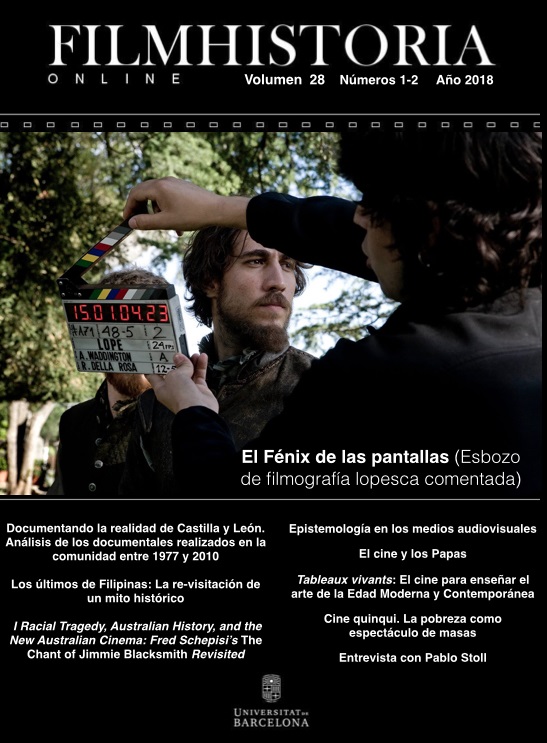Racial Tragedy, Australian History, and the New Australian Cinema: Fred Schepisi’s The Chant of Jimmie Blacksmith Revisited
Palabras clave:
The Chant of Jimmie Blacksmith, Fred Schepisi, Thomas Keneally, New Australian Cinema, racism and colonialismResumen
The Chant of Jimmie Blacksmith (1978) broke ground in its native country for
dealing bluntly with one of the most tragic aspects of Australian history: the racist
treatment of the aboriginal population. Adapted faithfully from the 1972 novel by
Thomas Keneally, the film concerns a young man of mixed race in turn-of-the-century Australia who feels torn between the values and aspirations of white society, on the one hand, and his aboriginal roots, on the other, and who ultimately takes to violence against his perceived white oppressors. This essay re-views The Chant of Jimmie Blacksmith from the following angles: its historical context; its place in the New Australian Cinema; its graphic violence; and the subsequent careers of the film’s director, Fred Schepisi, and its star, Tommy Lewis.
Descargas
Publicado
Número
Sección
Licencia
El/la autor/a conserva los derechos. Creative Commons. Esta obra está sujeta a una licencia de: Reconocimiento-NoComercial-CompartirIgual
CC BY-NC-SA







